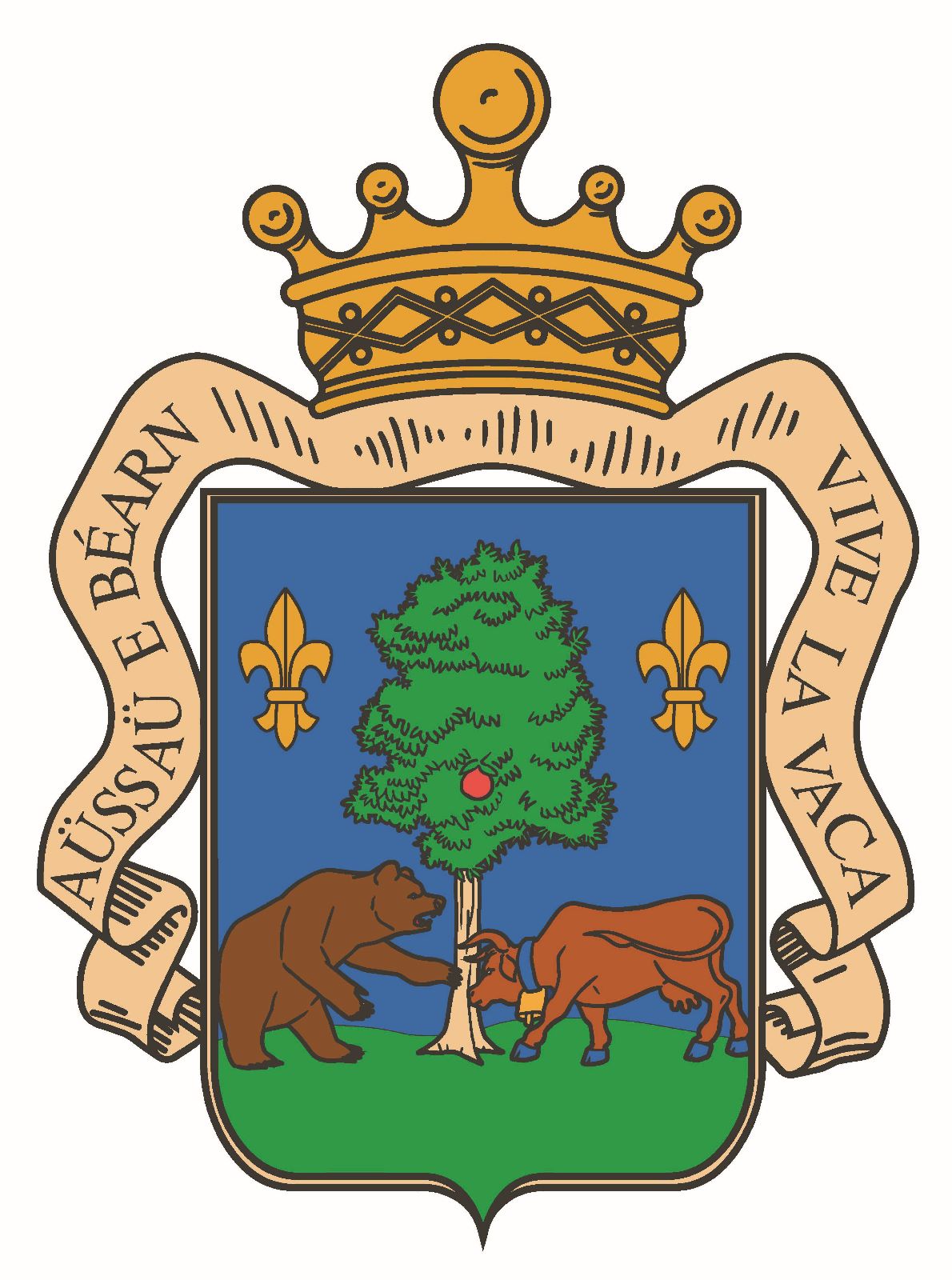To date, the valley of Ossau has been represented by two coats of arms : one in the 18th century and another (the current one) dating from 1817.
The first known coat of arms was signed and attested by all the Ossalois jurats during the 18th century.
However, it may be that the latter is prior to this deliberation because the valley of Ossau is a territory in its own right and well structured since the early Middle Ages.
Having its own coat of arms allowed the community to assert its particularity.
The reading «VAL DE OSAU» is done from right to left... and does not seem to be the result of a reproduction defect.
As for the writing, «OSAU» with a single «S» is a variant among others. As for the final «V», we can certify that it is in fact only a «U» who pronounces «W» in Béarnais.
To respect the local pronunciation of the name of our valley, the phonetic transcription understood by all should be written: «Oüssaü» (pronounced «Owsaw»)
This coat of arms depicts a bear wearing a collar (which may seem odd for a wild animal…).
Since the bear is synonymous with strength and power, would this mean that one could claim his powers by taming him ?
The current coat of arms has existed since 1817. According to Doctor Vastel, it owes its origin to a «famous» fight that took place between a bear and a cow on the mountains of Beost.
We notice on the coat of arms the appearance of the fleurs-de-lys (symbol of French royalty), the words "BEARN" and "VIVE LA VACA" (may the cow live, the war cry of the Béarnais).
The two cows represent the coat of arms of Béarn. One could then assume that: the cow is the Bearn, the bear is the valley and the tree represents justice. The fierce fight between these two animals could evoke the age-old struggle of the Ossalois against the Béarnais for the protection of their land on the long-bridge !
